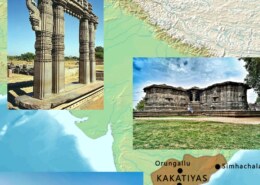Endogenic forces: what are they? Describe their sorts and how they contributed to the formation of the different landforms on Earth.
Madden-Julian Oscillation (MJO) is an eastward moving pulse of cloud & rainfall in the tropics that recurs every 30 to 60 days. It is a traversing phenomenon and is most prominent over the Indian and Pacific Oceans. MJO consists of two phases or parts as follows Enhanced rainfall or convective pRead more
Madden-Julian Oscillation (MJO) is an eastward moving pulse of cloud & rainfall in the tropics that recurs every 30 to 60 days. It is a traversing phenomenon and is most prominent over the Indian and Pacific Oceans.
MJO consists of two phases or parts as follows
- Enhanced rainfall or convective part: At this phase, winds at the surface coverage pushed up throughout the atmosphere.
- After reaching the top of the atmosphere, the wind reverses.
- Such rising air motion in the atmosphere tends to increase condensation and rainfall.
- Suppressed rainfall phase: Winds converge at the top of the atmosphere, forcing air to sink and, later, to diverge at the surface.
- As air sinks from high altitudes, it warms and dries, which suppresses rainfall.
- This phase brings more sunshine and dryness in the suppressed convective phase.
Difference between El-Nino and MJO
Although both El Nino and MJO are ocean-atmosphere interactions that occur in the equatorial region they differ on account of their
- Nature: While El Nino i.e. the unusual warming of sea-surface Pacific waters off the South American coast, is a stationary system, the MJO, on the other hand, is a moving system of wind, cloud and pressure that brings rain as it circles around the equator.
- Frequency: While El-Nino is associated with persistent features that last several seasons over the Pacific Ocean basin, MJO events occur within a season (i.e. weather varies on a week-to-week basis).
- Impact: Although the Indian Ocean Dipole (IOD), El-Nino and MJO are all oceanic and atmospheric phenomena, which affect weather on a large scale. IOD only pertains to the Indian Ocean, but the other two affect weather on a global scale-up to the mid-latitudes.
Impact of MJO on Indian Monsoon
As it moves, strong MJO activity often splits the planet into two zones: one in which the MJO is in active phase and brings rainfall, and the other in which it suppresses rainfall.
- When it is over the Indian Ocean during the Monsoon season, it brings good rainfall over the Indian subcontinent.
- On the other hand, when it witnesses a longer cycle and stays over the Pacific Ocean, MJO brings dry air and bad news for the Indian Monsoon.
MJO being a lesser-known phenomenon, it becomes important for the Indian Meteorological department to study more and to track it timely to predict its impact on Indian Monsoon.
See less

 .
.
Endogenic forces are internal geological processes originating from within the earth's interior including tectonic, volcanic, plutonic, geothermal and isostatic activities that shape the planet's surface and create landforms. Types of Endogenic forces - Tectonic forces are internal forces that moveRead more
Endogenic forces are internal geological processes originating from within the earth’s interior including tectonic, volcanic, plutonic, geothermal and isostatic activities that shape the planet’s surface and create landforms.
Types of Endogenic forces –
Role in forming landforms –
Endogenic forces which shape earth’s interior and surface have many practical uses including generating clean energy, finding minerals, predicting natural disasters and understanding earth’s history benefiting various industries and communities.
See less